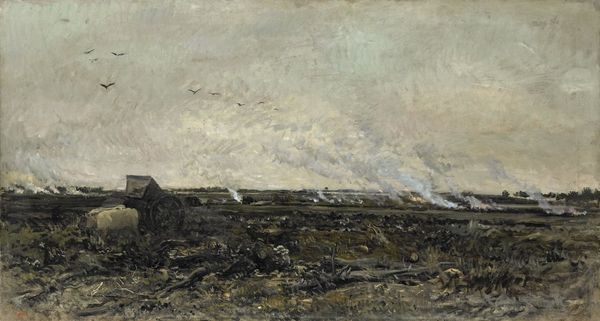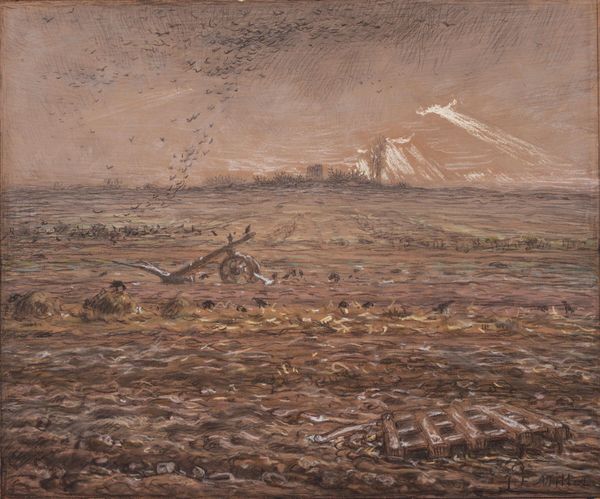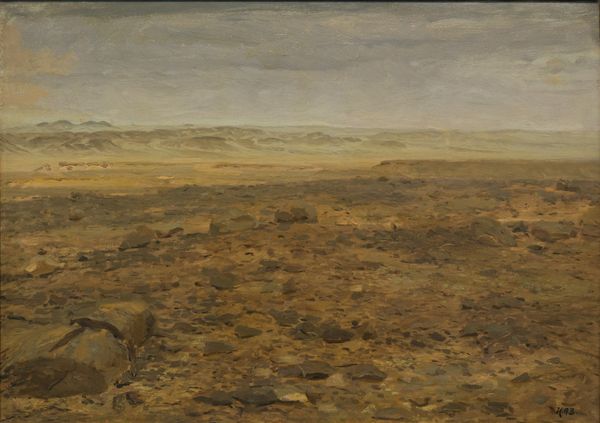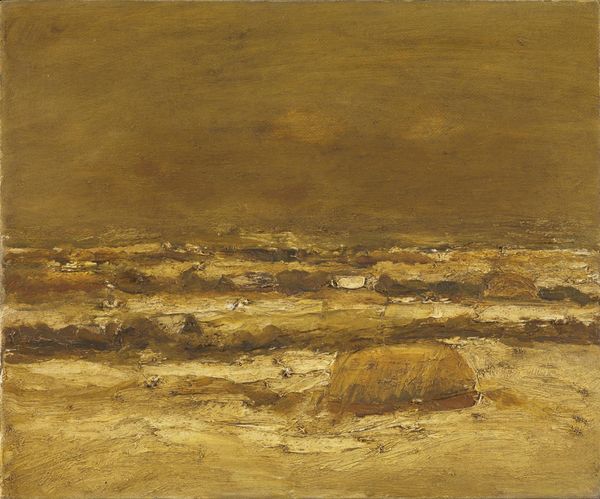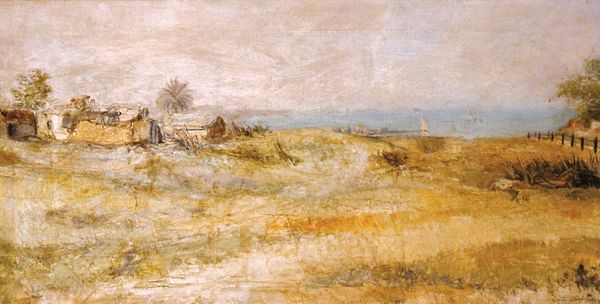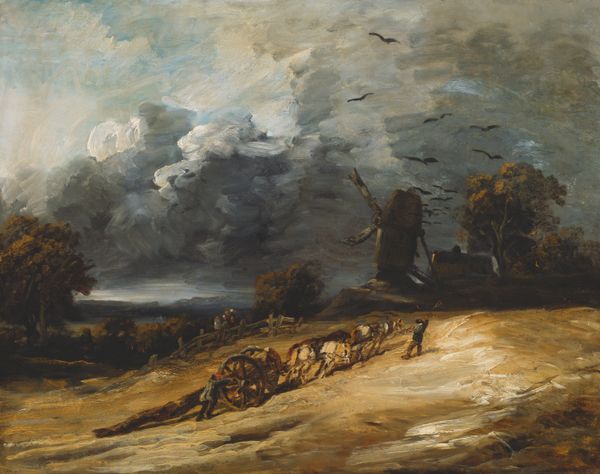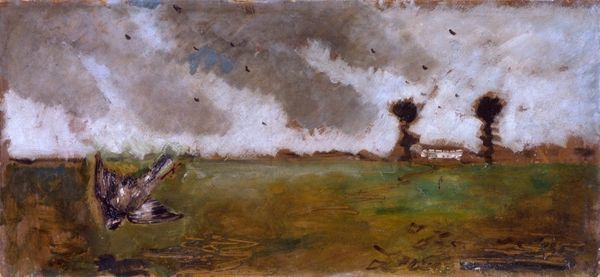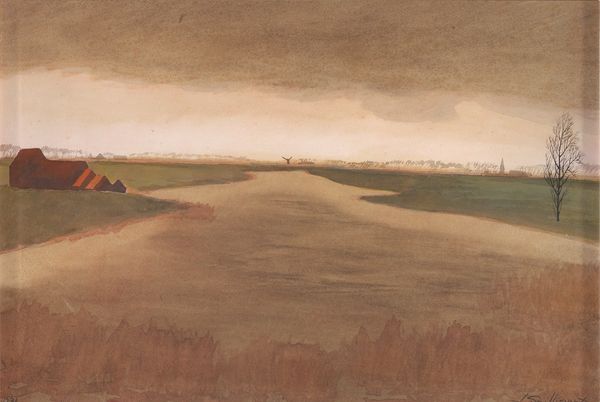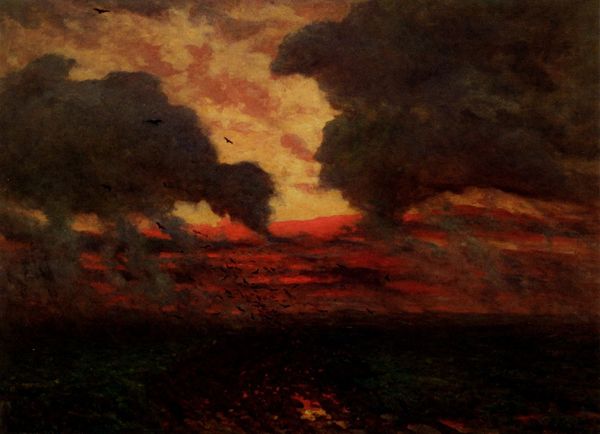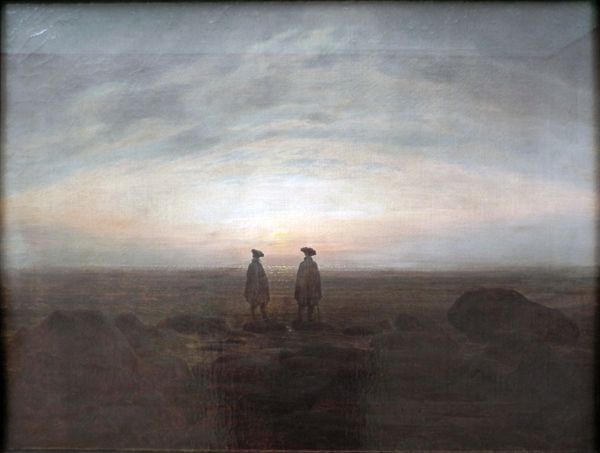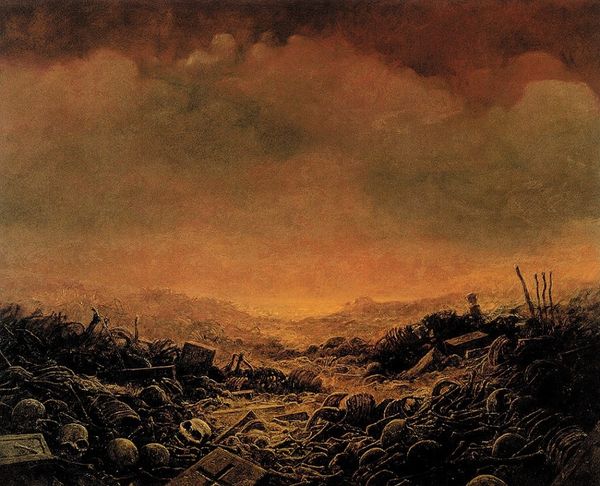
Copyright: Public Domain: Artvee
Editor: Looking at Jean-François Millet's "Die Ebene von Chailly mit Egge und Pflug" from 1862, I'm struck by the stillness of the land, contrasted with the flurry of birds overhead. The earthiness of the oil paint itself contributes so much to the overall feeling of melancholy, yet groundedness. What jumps out at you when you consider this piece? Curator: For me, it's the tension between romanticism and realism, embodied in the materials themselves. Millet’s heavy use of impasto reflects the physical labor inherent in working the land. This wasn't just a pretty scene to him; it was about the sweat, the dirt, the very real struggles of the peasantry. Think about the social context: the rise of industrialization pushing people off the land, the commodification of agriculture itself. The abandoned tools become potent symbols of displaced labor. Editor: So you're seeing the materials and the process as highlighting social issues of the time? How does his technique contribute? Curator: Precisely. The dark palette and the textured paint evoke the harshness of rural life. It wasn’t about idealizing the landscape; it was about depicting the material realities of agriculture and its place in a changing society. He wasn't just representing an object; he was showing us labor itself through those deliberate strokes of paint. The field isn’t just a field; it’s a workspace, a source of life, and increasingly, a source of economic anxiety. How do you feel Millet addresses the role of labour? Editor: That makes me consider how modern viewers may interpret these representations of labour, far removed as we are from those realities. Thank you; I’ll certainly consider materiality and its context much more closely going forward. Curator: Indeed. Paying attention to the artist's materials and methods encourages us to view the art through a socioeconomic lens, enhancing our comprehension.
Comments
No comments
Be the first to comment and join the conversation on the ultimate creative platform.
